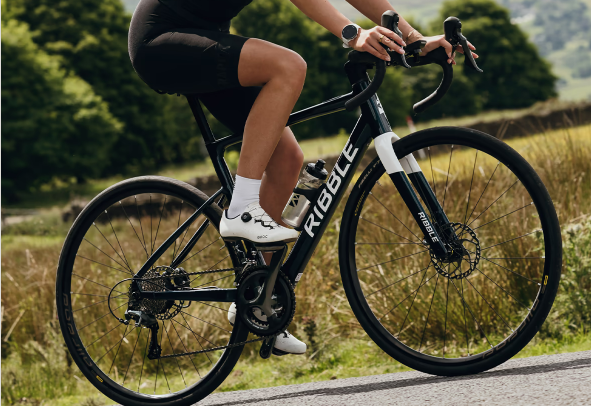Best electric road bikes: Go farther, faster
The best electric road bikes will give you the feel and ride of a top-end road bike, but provide a boost when needed
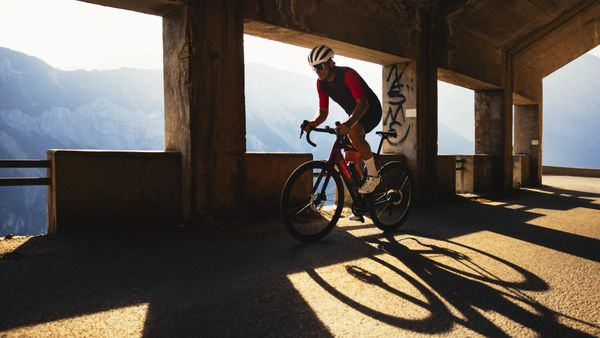
The best electric road bikes can almost go unnoticed these days, so discreet do they now look. But when you need an assist, the motor is there to help you climb hills in more comfort or keep up with faster riders. They're also great fun to ride.
Many handle just like a normal road bike and they utilise a lot of the same components regular road bikes do, like the best road bike wheels and best road bike tyres, most of which are rated for e-bike use these days.
The best electric bikes can be used for a range of uses, including e-bike commuting and gravel riding. We will be taking a look a the best electric road bikes here, a category that has come a long way, with the best models being very close to the best road bikes in terms of ride quality and looks, whilst offering heaps of extra power when needed.
We've gathered the best electric road bikes into this list, helping you analyse specifications and tech to help you make a more informed buying decision. If you still need a little more help, head to the bottom of the page to see our buying guide pointers.
Quick list: Best electric road bikes
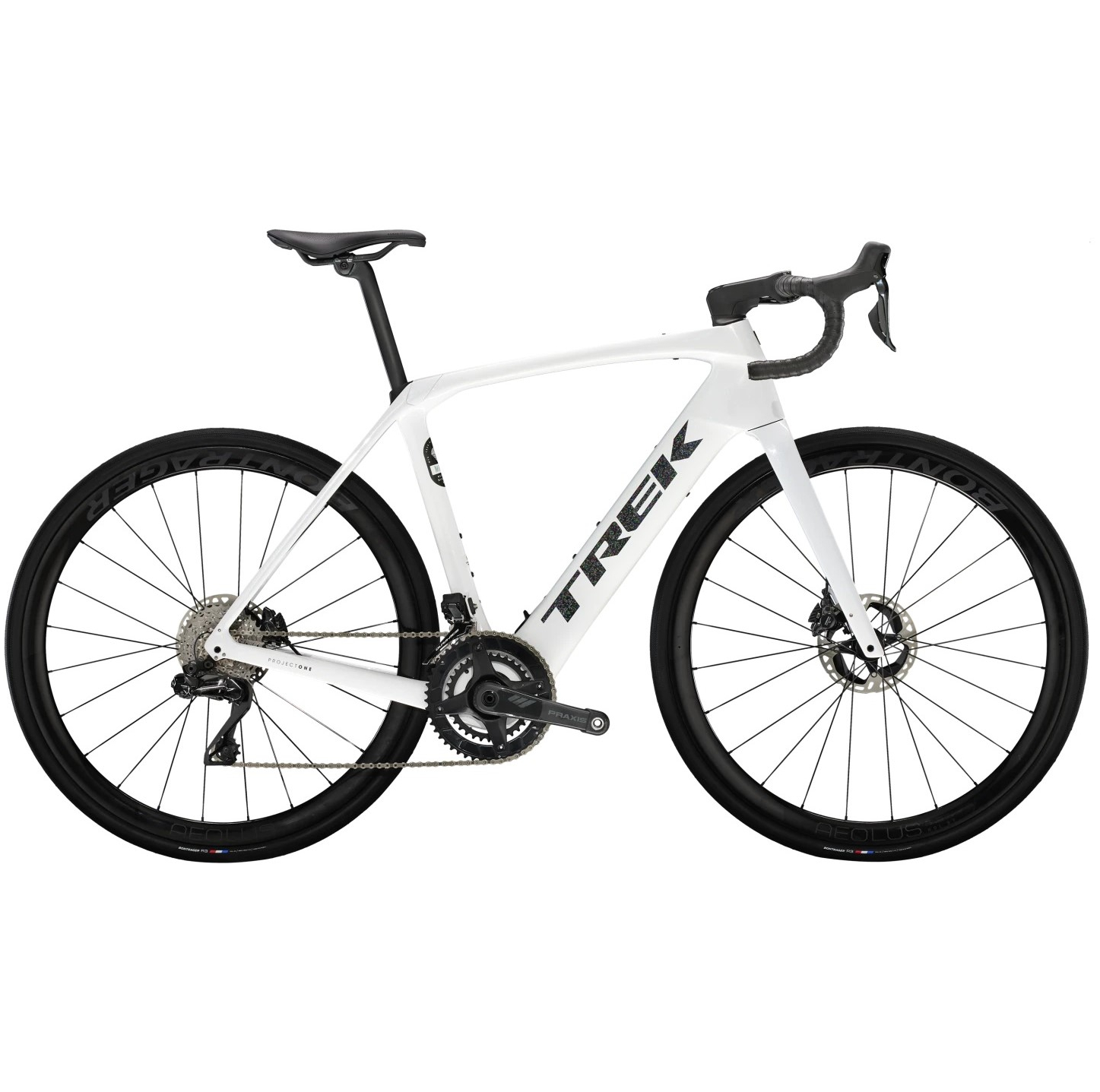
The Domane+ SLR is a super-light road bike that in the US can power you up to 28mph, although it's speed-limited at 25kph elsewhere.
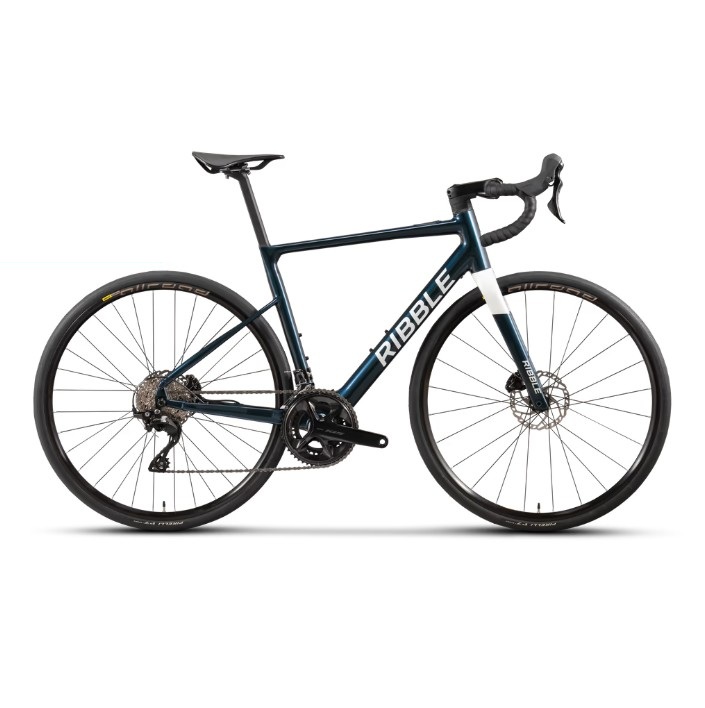
The Ribble Allroad E AL provides an affordable electric road bike option, but powered by a Mahle hub motor, it provides plenty of assistance in a stealthy package.
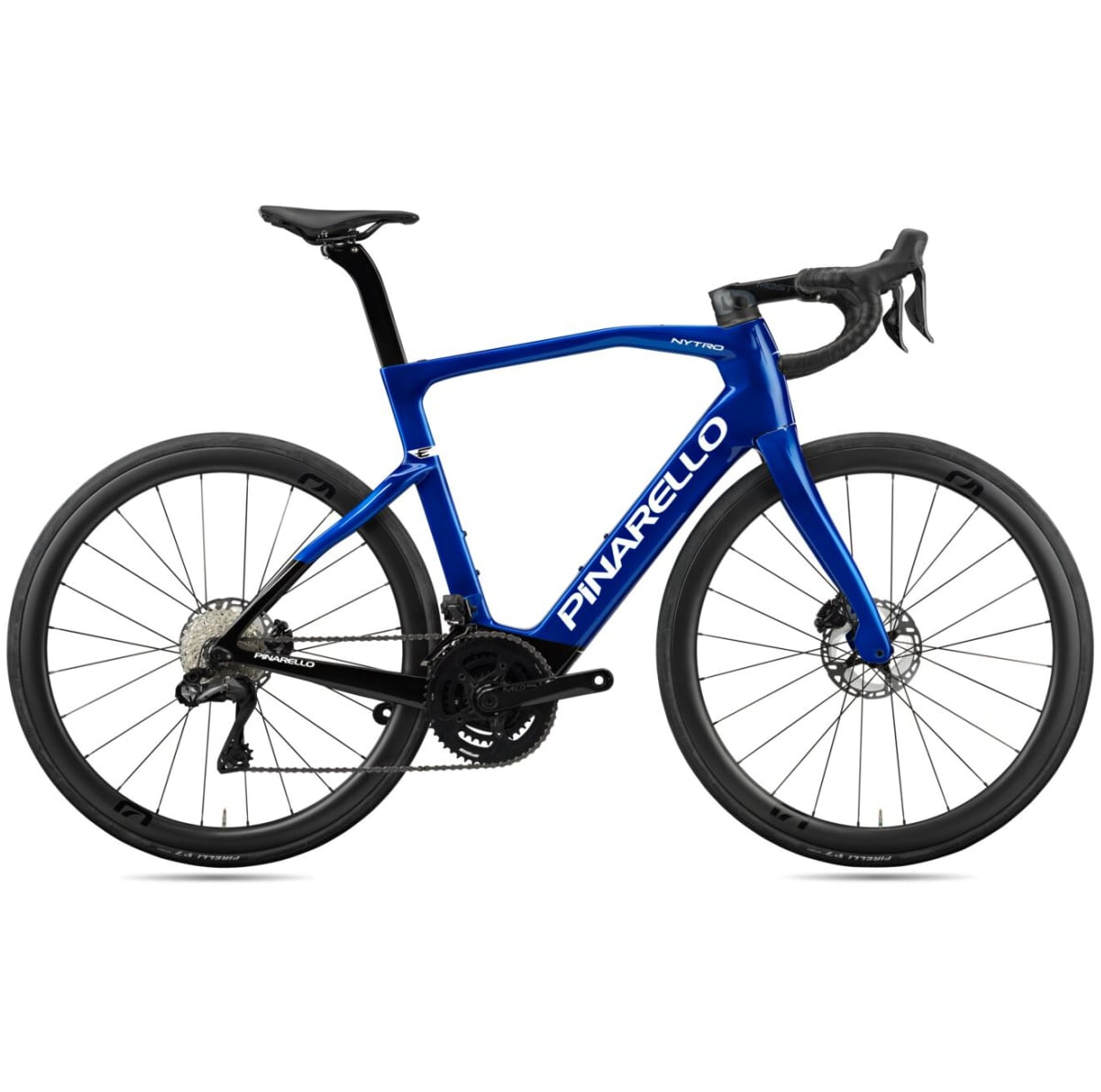
Based on the pedal-only Dogma, the Nytro has a stealth motor system and the same aero tube profiles as the non-assisted bike.
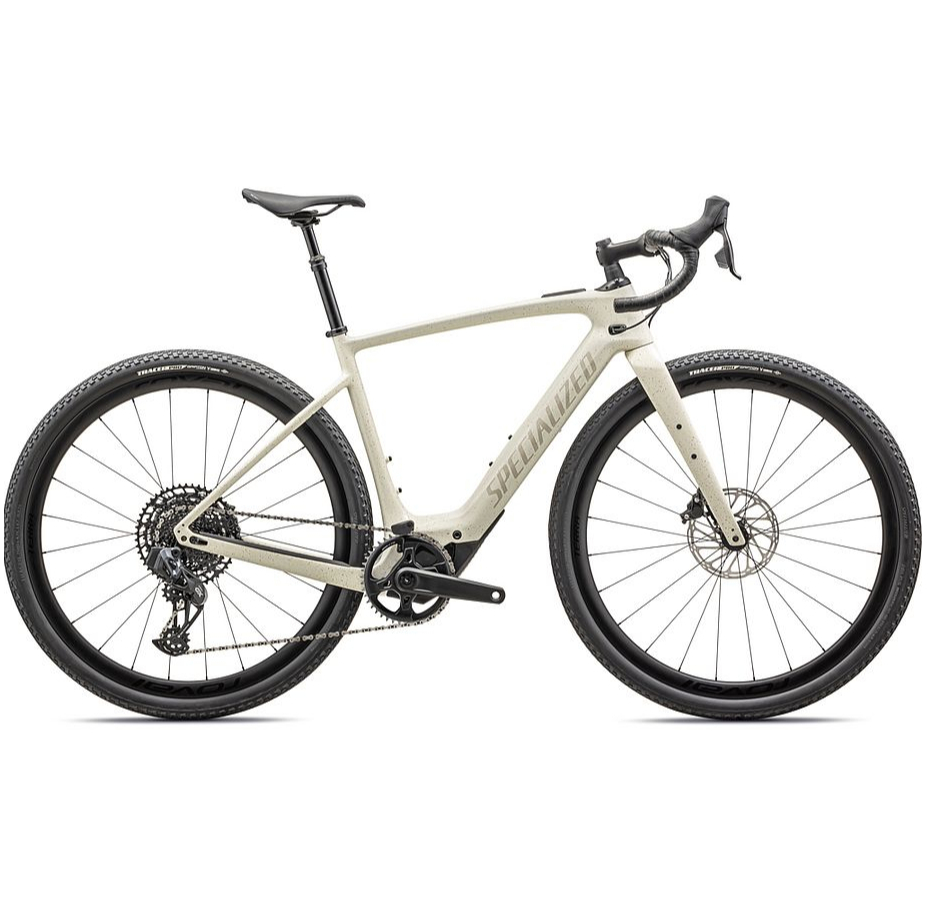
The Specialized Creo 2 electric bike is much more oriented to off-road use, with wider tyres, a more powerful motor and even a dropper post.
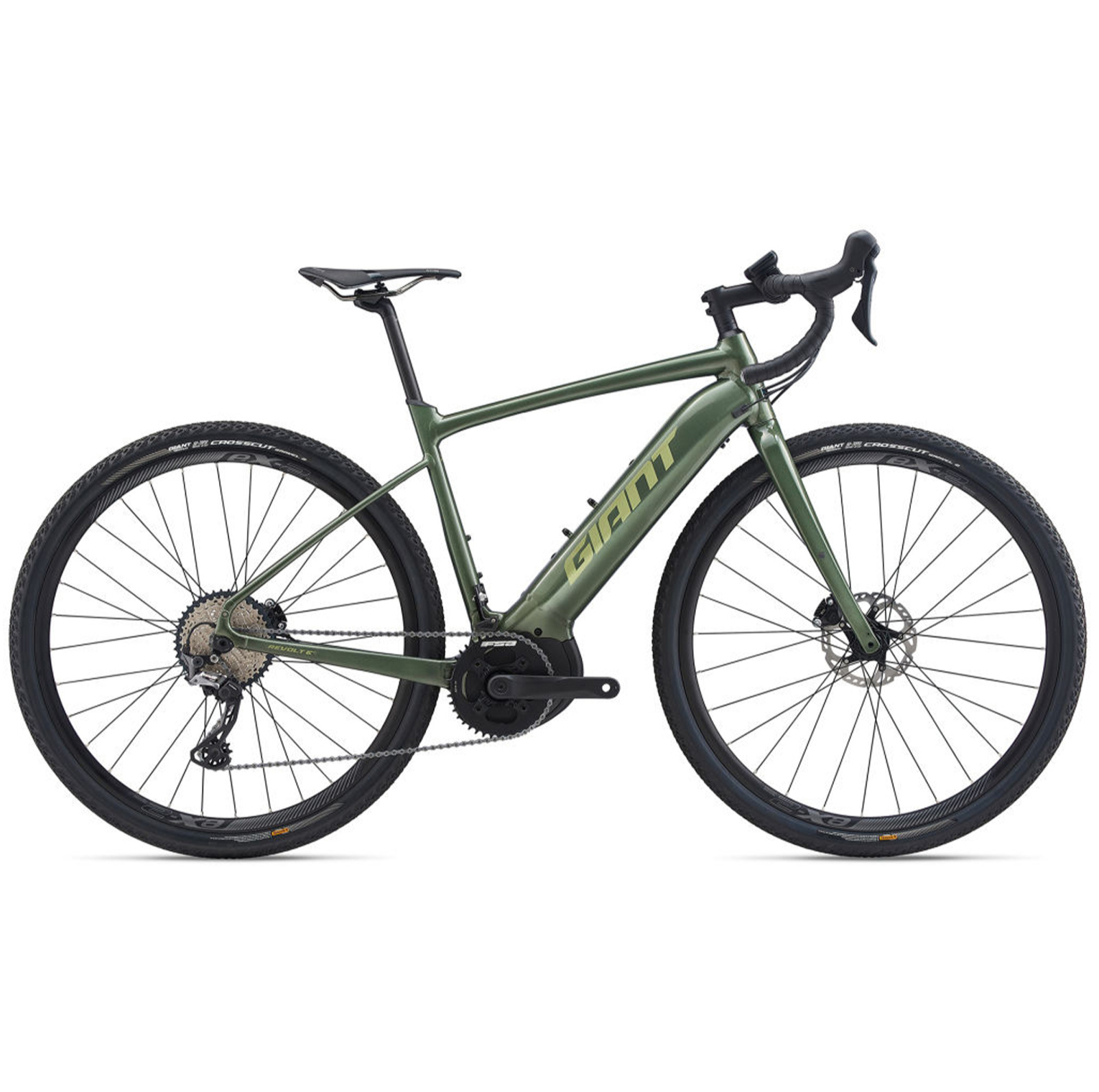
The Giant Revolt E+ Pro has the same Shimano EP8 motor as found on many e-MTBs, so it's got the grunt to haul you up the steepest climbs.
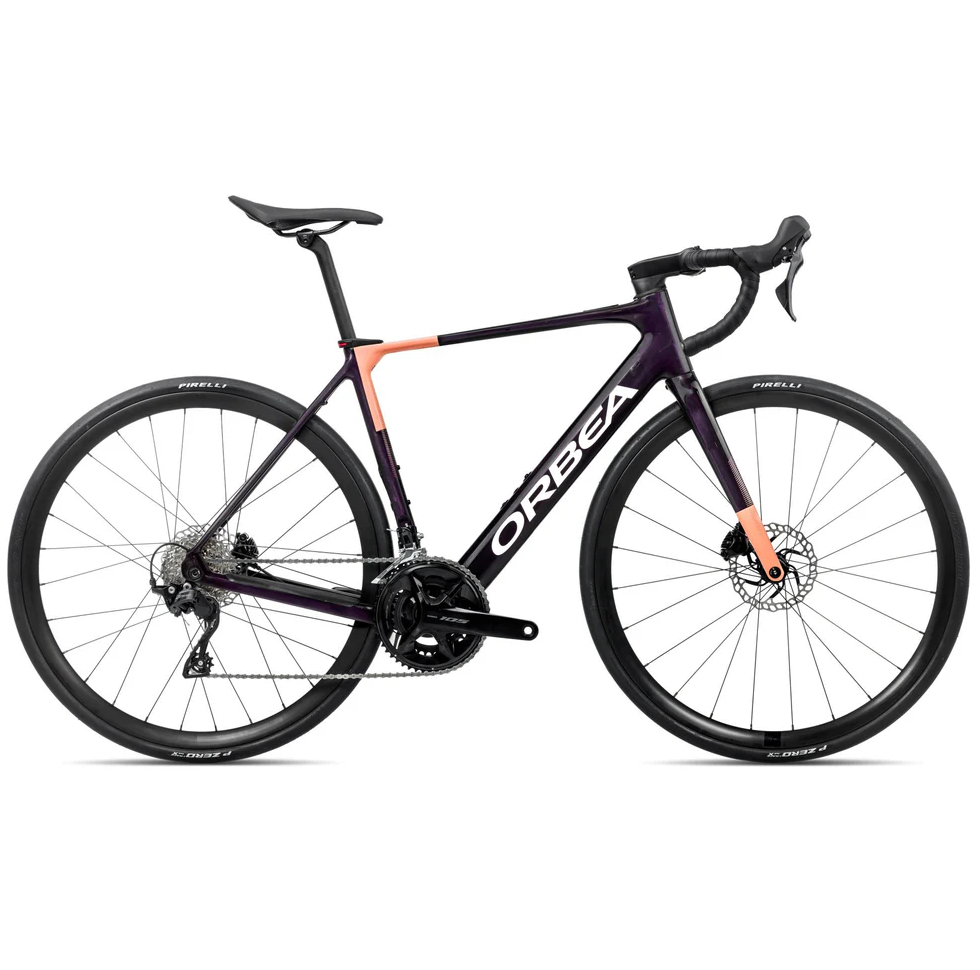
The Orbea Gain includes sleekly integrated lighting, as well as hidden cables, making for a clean, stylish look.
Last updated 20th October 2025
All bikes checked for availability, some newer replacement models substituted and images were updated. A How To Choose section was added to highlight some key considerations when choosing the best electric road bike.
Best electric road bikes
You can trust Cyclingnews
Best electric road bike
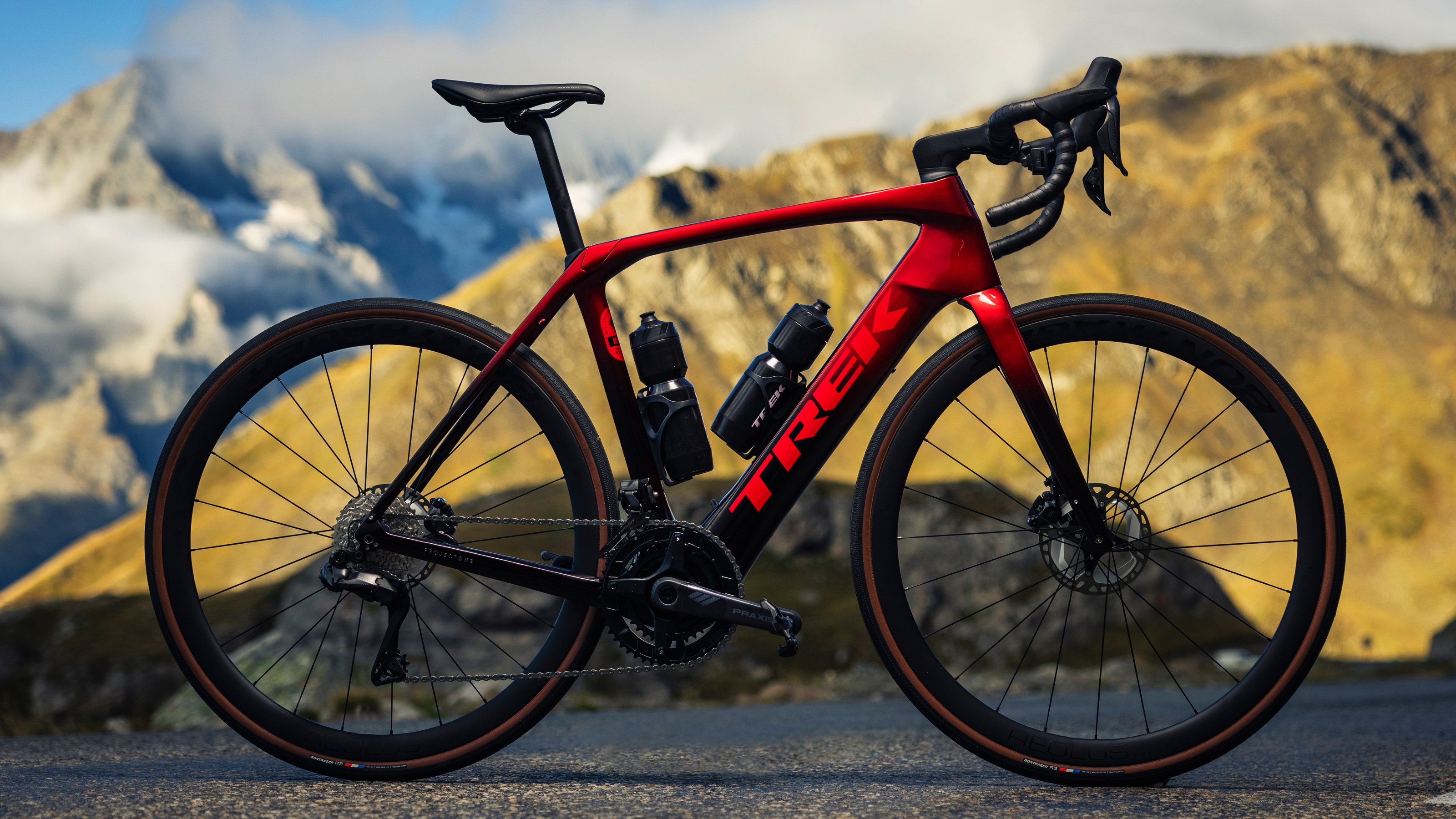
1. Trek Domane+ SLR
Specifications
Reasons to buy
Reasons to avoid
✅ You want Class 3 assistance: US riders get assistance up to 28mph.
✅ You want a premium spec: The top spec SLR 9 is decked out with the cream of the crop.
❌ You want something racier: The Domane platform has quite a high/short ride position.
❌ You want a lower price: All specs of the Domane SLR are expensive.
The Trek Domane+ SLR is the lightest e-road bike from the US-based brand. Available in six different spec options but all based around a super-lightweight Trek OCLV 800 carbon frame, this is the lightest e-road bike Trek has ever produced.
The Domane+ SLR is aimed at performance road riders who want a little extra zip and has a discreet motor and battery from German specialist TQ which offers a super smooth and quiet e-riding experience. There's also a more affordable Domane+ ALR, which shares the same motor, but in an alloy frame.
You get a neatly integrated LCD display in the top tube, mode toggle buttons set alongside the shifters, and the lights and, for SRAM models, the shifting are powered from the central battery. If you want a high-end lightweight electric road bike, the Domane + SLR is one we'd be happy to recommend, although it is expensive.
Best on a budget
2. Ribble Allroad E AL
Specifications
Reasons to buy
Reasons to avoid
✅ You want to make spec choices: Ribble's build to order system allows you to choose.
✅ You want longer range: As with many bikes here. you can add a range extender.
❌ You want a lower weight: Ribble's carbon Allroad SL R E will shave some weight.
❌ You want easier charging: As with most bikes here, the battery must be charged on the bike.
Claimed to weigh 1from 13.7kg, the Ribble Allorad E AL is one of the lowest priced e-road bikes currently available and, visually, the frame is almost identical to its non-assisted sibling, including the 35mm tyre clearance.
Using the Mahle e-bike system, the Allroad E AL doesn't get a bar-mounted control unit, instead opting for a button on the top tube that cycles through the three levels of assistance. Hidden inside the downtube is a 250Wh battery, which is connected to a rear hub motor that provides 45Nm of torque. There is an accompanying app, too, which will provide additional information such as remaining battery life and you can even hook up a heart rate monitor to add extra assistance as your heart rate increases.
You can choose your preferred saddle, bar width and stem length, as well as custom colours when ordering. Ribble also sells the lighter carbon Allroad SL R E with a more powerful Mahle X20 system, if you fancy an upgrade.
Best premium electric road bike
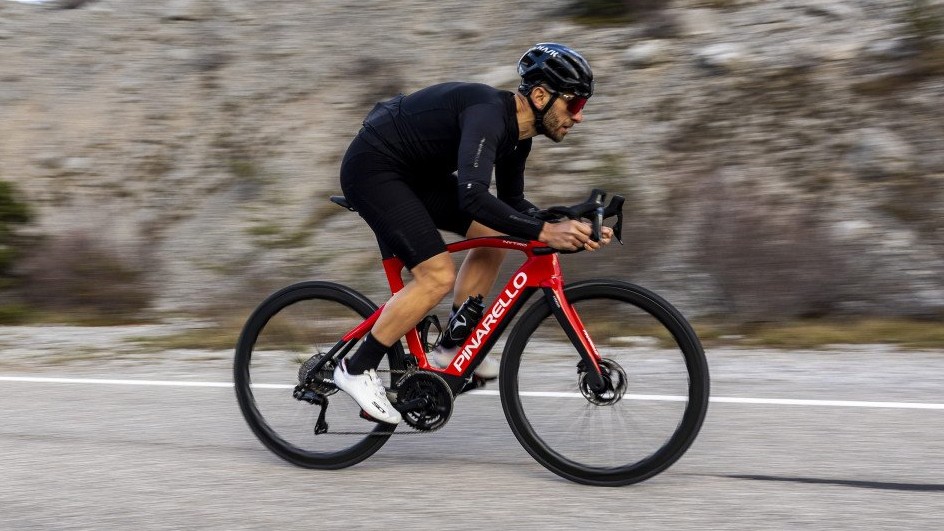
3. Pinarello Nytro E7 Ultegra
Specifications
Reasons to buy
Reasons to avoid
✅ You want a Pinarello: The Pinarello brand carries a lot of cachet in the cycling world and beyond.
✅ You want a bike that is influenced by a WorldTour: The Nytro shares the unique tube shapes of Pinarello's Dogma F race bike.
❌ You want a good value spec: Pinarellos carry a premium price.
❌ You want to fly under the radar: People notice Pinarellos and will probably spot the motor and battery quickly.
On the surface, the Nytro looks like any other Pinarello frame, complete with a wavy fork and aero tubing, but hidden in the downtube are a TQ drive unit and battery. The Nytro has up to 250w of power and 50Nm of torque, plenty to get you up hills and for fast acceleration.
The frame uses the brand's TorayCa T900 carbon frameset as a starting point. Rest assured, Pinarello hasn't forgotten to give the Nytro its trademark asymmetric tube treatment.
Built with a Shimano Ultegra 12-speed electronic drivetrain, the bike gets hydraulic disc brakes and rolls on 40mm deep carbon wheels from Pinarello's Most component brand. It also comes with a Pinarello-sized price tag, although Pinarello does also sell the lower spec E5 model which reduces the price a little.
Best for off road use
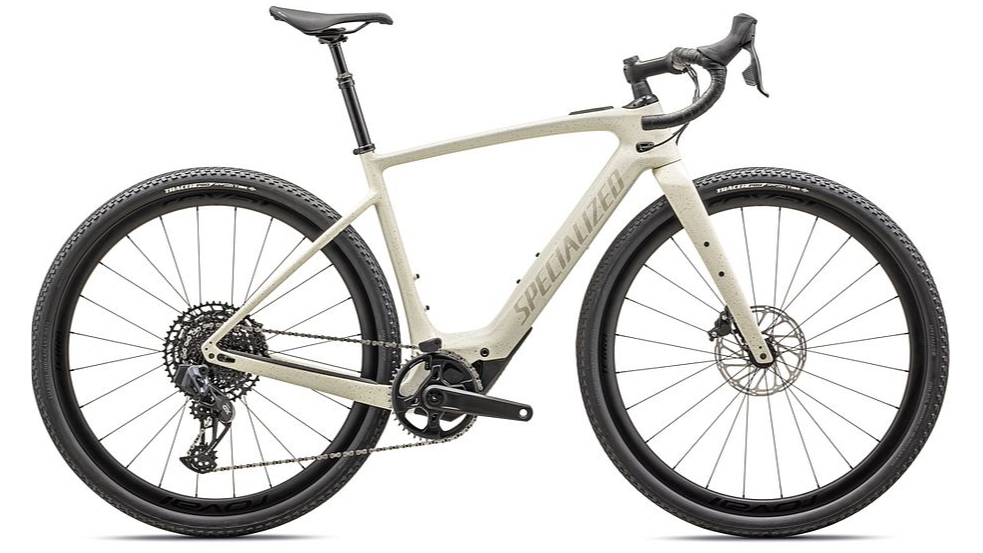
4. Specialized Creo 2 Expert
Specifications
Reasons to buy
Reasons to avoid
✅ You want on/off road capability: Specialized has set the Creo 2 up for gravel as much as road riding.
✅ You want extra comfort: The Future Shock headset helps smooth the surface.
❌ You want a more competitive price: The Creo 2 is more expensive than some of the competition.
❌ You want stealthier integration: The bulbous down tube and bottom bracket aren't very pretty.
Specialized launched the Creo 2 in September 2023, replacing the original model with a new design, which has a lighter frame, a more powerful, quieter motor and incorporates the Future Shock 3 also found on the Specialized Roubaix SL8.
The Cero 2 adds to the Creo's off-road credentials while soft-pedalling on the road, with a revised geometry, wider tyres and even a dropper post. US riders get motor support up to 28mph.
We've had our first ride on the Creo 2 at the launch event. This was mainly off-road, which emphasises the Creo 2's new direction over the original Turbo Creo, which looked to straddle both road and off-road. If you want to enjoy gravel too this could be the bike for you.
Best for motor power
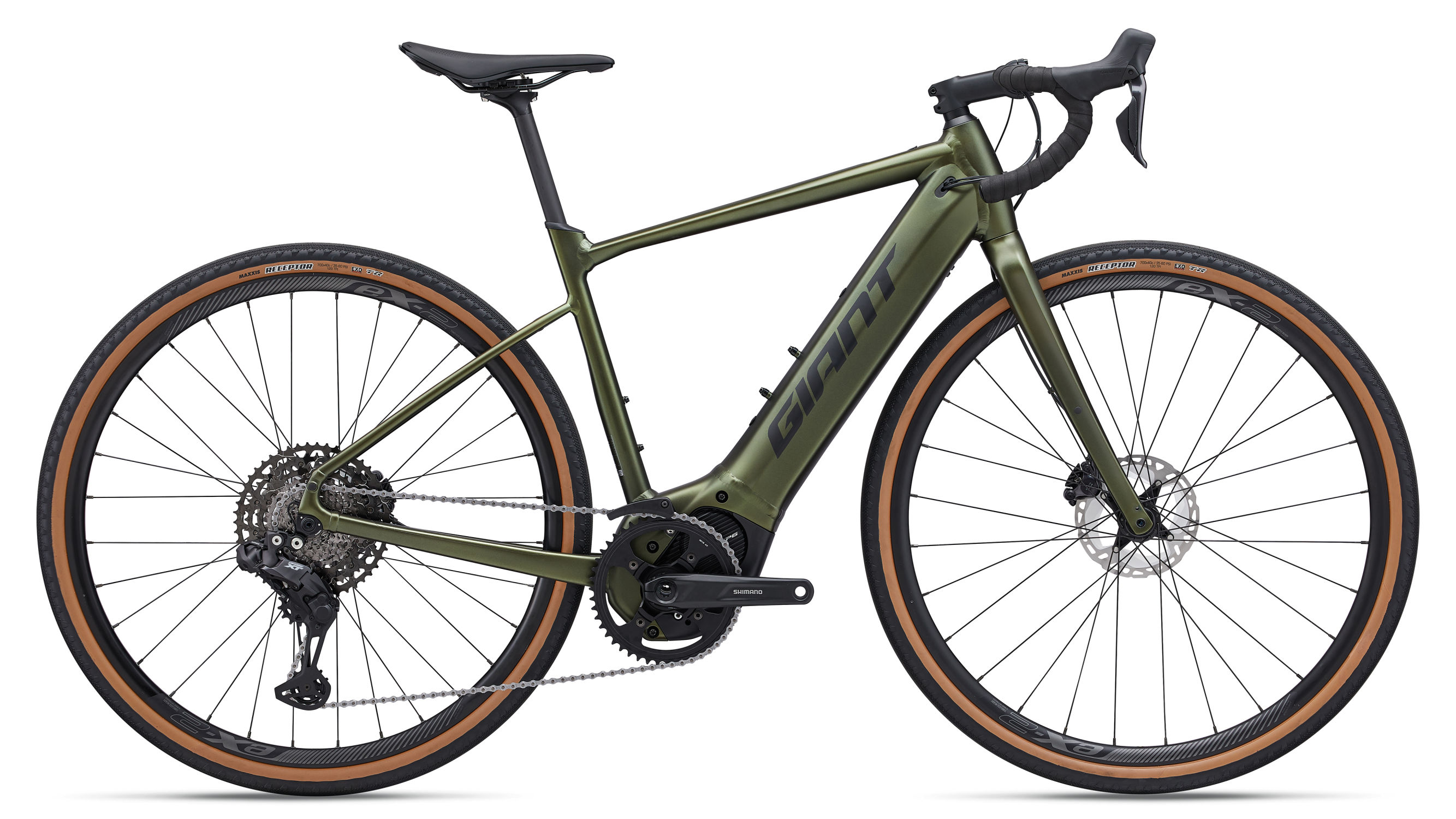
5. Giant Revolt E+ 1
Specifications
Reasons to buy
Reasons to avoid
✅ You want a lot of power: The EP6 motor powers MTBs too and its 85Nm is a lot of torque.
✅ You want off-road capability: The big motor and big tyres will keep you moving on tough terrain.
❌ You want something pretty: The Revolt E+'s down tube looks out of proportion.
❌ You want a lower weight: The big motor and battery add a lot of heft.
There's no denying that the Revolt E+ carries more of an electric bike aesthetic than some others here, but within its oversized down tube comes a large battery and a motor with a lot of torque.
Powering it is the Shimano EP6-powered SyncDrive EP6 pedal-assist system, which promises smooth acceleration, thanks to its 85Nm of maximum torque. Meanwhile, the Shimano Ultegra electronic groupset and 40mm Maxxis tyres make it all ready if you plan to mix things up a bit. There are also mounts for mudguards and racks.
The system is simple to use, and the motor comes with a SmartAssist mode that automatically adapts to your cadence and ride style, tuning the amount of assistance to the levels you actually need. This means you don't need to think about anything and can just get pedalling, leaving the motor to do its thing for you.
Best for integration
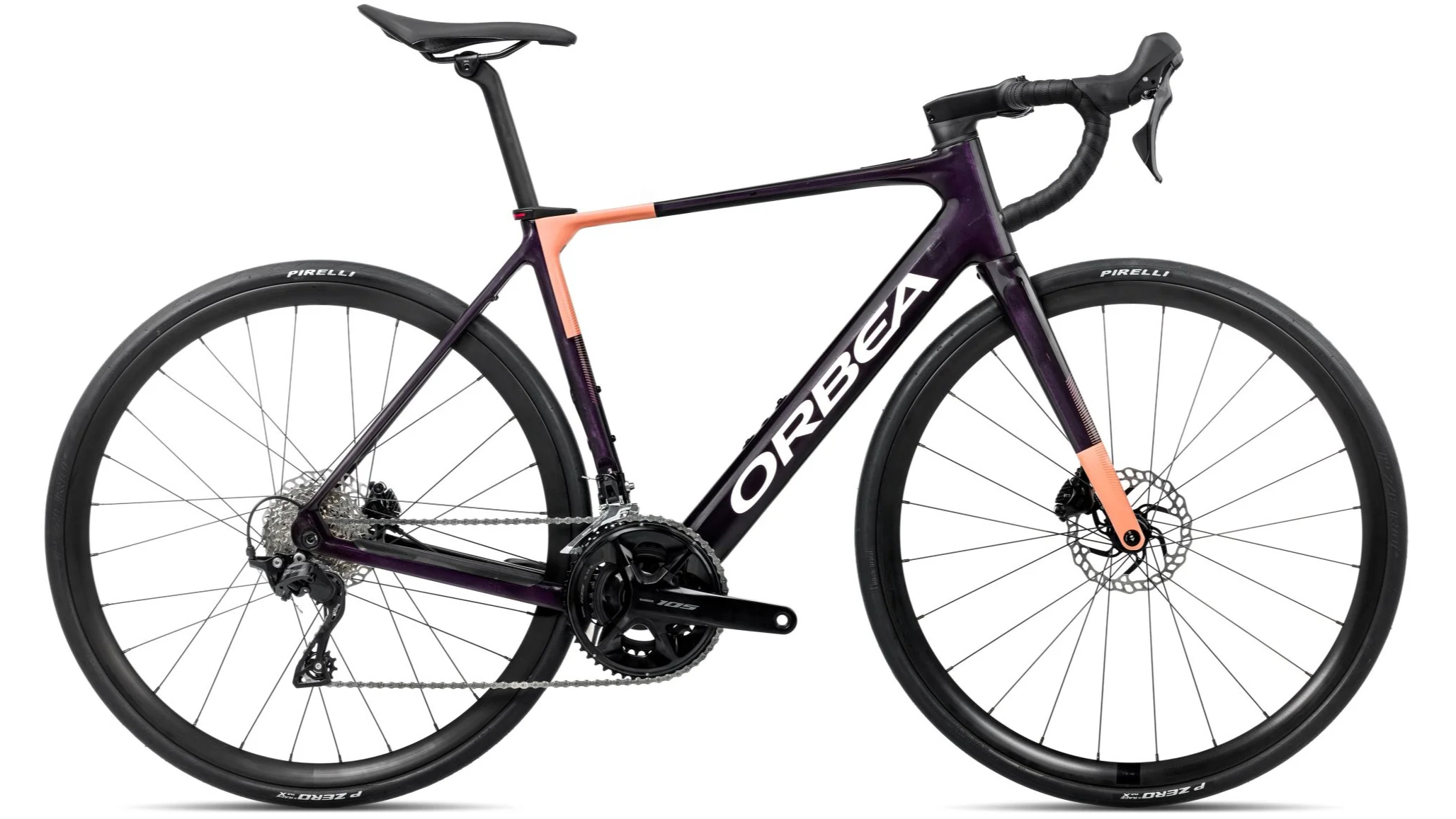
6. Orbea Gain M30
Specifications
Reasons to buy
Reasons to avoid
✅ You want sleek integration: The Gain is one of the most stylish e-road bikes.
✅ You want in-built lighting: Orbea's lights are among the best integrated.
❌ You want a higher spec for your cash: The mechanical 105 groupset and alloy wheels are a bit disappointing at the Gain's price.
❌ You want more tyre clearance: The 35mm clearance is likely to restrict you to road use.
Orbea was one of the first brands to integrate the Mahle rear hub motor system into its road bikes and the Gain remains one of the most stylish electric bike implementations. The latest models use the more compact X20 system, for an even lower profile hub motor, which also produces more torque than the original X35.
Orbea includes a front light, which is integrated into the out-front computer mount. The Gain is supplied with a Mahle computer, which allows you to control the output from the motor system and check its status, without needing to use the top tube button. There's also a rear light on the saddle clamp, with both front and rear lights being powered by the 353Wh internal battery.
With a Shimano 105 12-speed mechanical groupset, there's plenty of gear range, although this does feel a little under specced for the Gain M30's price.
Best value
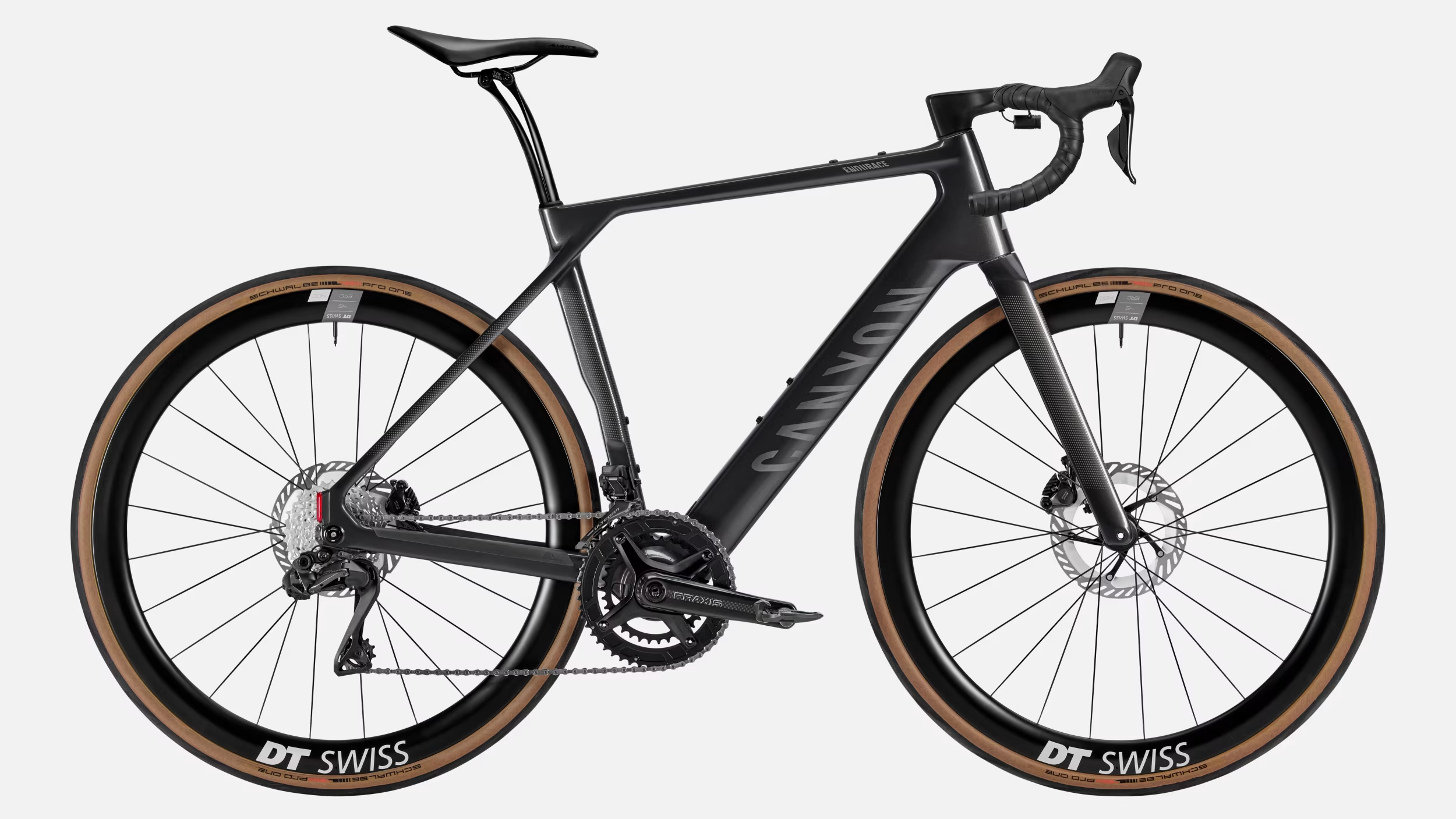
7. Canyon Endurace:ONfly CF 8
Specifications
Reasons to buy
Reasons to avoid
✅ You want a good spec for the price: The Ultegra Di2 groupset and carbon DT Swiss wheels are premium products.
✅ You want a competitively low weight: Canyon claims a sub-11kg weight for the CF 8 and the top spec dips below 10kg.
❌ You want greater assistance: The TQ motor has a 200W/40Nm torque output that's a little lower than that of most e-bike motors.
❌ You want a lighter bike: Choose the SUB-10 spec, and the claimed weight drops to 9.86kg.
Canyon's electric road bike, the Endurace:ONfly is available in a range of specs, with the CF 8 offering a quality spec, with electronic Shimano Ultegra shifting and carbon DT Swiss wheels.
The bike is equipped with a TQ HPR40 motor system, with a 290Wh battery, which also powers front and rear lights and there's a GPS tracker in the frame, to help you to keep tabs on your bike's whereabouts.
The 40Nm torque output is lower than some alternatives, but should be adequate for reasonably fit road riders and offers a decent range. If you want to go all-in, the SUB-10 spec has a top tier spec that drops the weight to a claimed 9.86kg.
How to choose
Your riding demands will dictate which e-road bike is best for you. Hopefully, this guide should have given you an idea of what's out there. Next, you should consider how you may want to use your e-bike: are you commuting to work, adventuring and discovering new terrain or simply adding a new bike to your fleet? Your requirements will dictate weight, gearing, range, price point, etc. Test ride a bike if you can and chat with manufacturers or stores about which e-bike is best for you.
Here are the main points we think you need to consider:
- What type of riding do I want to do? If you want to ride both on road and off-road, consider a bike with greater tyre clearance.
- What range do I need? Check the claimed range and consider purchasing a bike to which you can fit a range extender if you think you need more.
- How much assistance do I need? If you want a natural ride feel, a lower torque motor may be the best option, whereas if you want maximum assist, consider a motor with 60Nm torque or more.
- What do I want to pay? The more you pay, in general, the lighter the bike will be and the more premium the components.
Electric road bikes: Frequently asked questions
What do I need to know about the drive system?
With the electric bike market continually growing, more and more brands are getting on board and developing newer and better technology all the time. The best electric road bike will likely come with a powerful and reliable drive system, including one of the best e-bike motors from the likes of Bosch, Yamaha, and Shimano, while some feature integrated units from Ebikemotion and Fazua.
These systems place the motor either at the bottom bracket or the rear hub and vary in weight. In fact, some of the integrated systems are surprisingly light. The power they offer is an important factor, and most hover between 250W and 500W.
What's the best capacity for an electric bike battery?
How long is a piece of string? It all depends on how much you're riding and how much you care about your electric road bike's aesthetic.
When e-bikes started to gain popularity, the batteries were bulbous and almost appeared to be haphazardly bolted on wherever there was space. Now we are seeing brands working to integrate them into the frame seamlessly.
Unfortunately, the smaller the battery, the smaller the capacity - which is measured in watt-hours (Wh). While some brands are quick to make claims about how far certain Wh batteries will take their bikes, these figures can vary greatly depending on the level of boost, the terrain, the weather and even the weight of the rider. Bosch has put together a handy Range Assistant, which can provide a good idea of how much mileage you can expect to achieve, depending on your riding habits.
While some bikes have removable batteries, which allow you to keep a spare and make charging easier, others with hidden battery packs look much cleaner. Often, there's a range extender available as an option, which takes up one of your bottle cages but can add up to 50% extra range.
Will an electric road bike be considered cheating?
E-bikes are now nearly universally accepted, and the 'cheating' argument has fallen by the wayside as people have acknowledged how useful and varied e-bike uses can be. Whether that be aiding sustainable travel or helping groups of riders with varying fitness ride together, no one is likely to be looked down on for choosing some extra assistance.
Are electric road bikes unisex?
As a general rule of thumb, most e-road bikes are made to be unisex, while having multiple size options that should work for most people. The saddle, which is the key contact area that needs some tailoring to fit the users, is easily swapped out for one of the best women's road bike saddles if need be.
If you would prefer a women's specific model, be sure to check out our list of the best women's electric bikes.
What are the e-bike laws in different countries?
Most e-bikes use one of a few major e-bike systems, however, depending on where you live, the level of assistance, as well as whether you need a licence and insurance, will vary. Here's a breakdown of all the e-bike restrictions in place in the UK, US and Australia.
1. The UK
The UK retains the EU's regulations regarding e-bikes. Most of the bikes featured here fall under 'The Electrically Assisted Pedal Cycle (EPAC) Amendment Regulations' mandates; electric assistance can only provide 250 watts of continuous power (although peak output can be higher) and must cut out at 25kph. It also stipulates the rider must be pedalling for the motor to kick in and be at least 14 years old.
Electric bikes (and riders) that meet these standards have the same legal standing as regular bicycles and are allowed on roads and bike paths.
In Europe, a new class of speed-pedelecs or s-pedelecs is gaining popularity. These are capable of providing assistance up to 45kph. You still need to pedal for the motor to kick in, however, under UK and EU law, these are considered two-wheel mopeds and require insurance, a legally certified helmet and a qualifying driver's licence.
2. The US
In the US, rules for e-bikes vary from state to state; 30 states classify e-bikes as ordinary bicycles, while the remaining 20 label e-bikes as mopeds, scooters or something else altogether.
Federal law defines an electric bicycle as a two- or three-wheeled vehicle with fully operable pedals and an electric motor of fewer than 750 watts, whose maximum speed on a paved level surface, when powered solely by such a motor while ridden by an operator who weighs 170 pounds, is less than 20mph.'
It's worth noting that this statute defines the maximum assisted speed of the bike when being only powered by the motor, not when it's being pedalled. To make things more confusing, state regulations can override the federal statute.
The Bicycle Product Suppliers Association has proposed a three-class system which divides electric bikes based on their maximum assisted speed:
Class 1: the motor provides assistance only when the rider is pedalling and cuts out a 20mph
Class 2: the motor can contribute regardless of pedalling, but is governed to 20mph
Class 3: the motor provides assistance when the rider is pedalling but cuts out at 28mph and must be equipped with a speedometer.
For all three classes, the motor can only put out a maximum of 750 watts, and the class needs to be clearly labelled. This system also defines where the bikes can be ridden; classes 1 and 2 are permitted anywhere bikes are allowed, while class 3 can be ridden on roads and bike lanes but not multi-use paths, and may be subject to minimum user age and helmet requirements.
So far, 22 states have legislation creating a class system and our friends over at People for Bikes have put together a full state-by-state rundown.
3. Australia
In Australia, e-bikes are split into throttle-operated and pedal-assist. Both systems must be limited to 25kph, and the throttle-operated motors can only output 200 watts while pedal assist is legal up to 250 watts. Anything that exceeds these figures is considered a motorbike and must be licensed and insured.
How we test
Although we haven't ridden many of the electric road bikes above, we've reviewed plenty of electric bikes and know what to look for and recommend.
When we review a bike, we'll ride it for an extensive period over a range of distances and in different conditions. That includes long rides and local loops that we know well, allowing us to compare bikes. We'll compare and score bikes across a range of criteria to reach our conclusions and publish our scores so you know what we think.
If you want to know more, head to our How We Test page.
The latest race content, interviews, features, reviews and expert buying guides, direct to your inbox!
Paul has been on two wheels since he was in his teens and he's spent much of the time since writing about bikes and the associated tech. He's a road cyclist at heart but his adventurous curiosity means Paul has been riding gravel since well before it was cool, adapting his cyclo-cross bike to ride all-day off-road epics and putting road kit to the ultimate test along the way. Paul has contributed to Cyclingnews' tech coverage for a few years, helping to maintain the freshness of our buying guides and deals content, as well as writing a number of our voucher code pages.
- Tom WieckowskiTech writer
